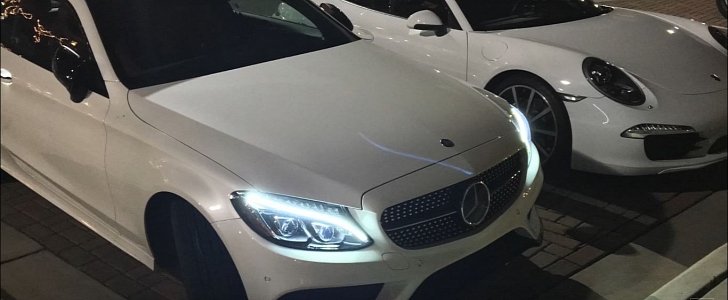You don't need to be a gearhead to know the ride coziness difference between a Mercedes-Benz C-Class Coupe and a Porsche 911. Nevertheless, it wouldn't hurt to see a documented approach on such a matter, especially if is this were to also highlight the comfort gap between the various driving modes of the two-door models.
Fortunately, a Redditor has decided to do just that - using a 2013 Porsche 911 Carrera and a 2017 Mercedes-Benz C300 Coupe, the man measured the level of vibration experienced while driving the cars back and forth the same stretch of road.
Of course, when talking about such tests, the methodology is an essential component and here's the aficionado behind the stunt explaining his modus operandi: "It was mounted to the windshield just under the mirror using a Ram suction mount. I know the mount adds some vibration to the readings, but it gave me more consistent data than just laying it on the seat. All tire pressures were checked and normal,"
The data was recorded using nothing but the driver's smartphone, an iPhone 6S and an app playing the accelerometer role. The piece of footage below, which documents the test, includes details graphs that allow one to get a good idea of how each of the vehicles handles the imperfections of the road.
The Neunelfer and the Benz were driven on a 65 mph highway, one that reportedly mixes two types of surfaces, namely new and aging asphalt. The driver set the cruise control at the mph value mentioned above, recording the data for five minutes.
Interestingly, while the driving modes of the C-Class Coupe made quite a difference in terms of the average vibration, we can't say the same about the 911. Regardless of the Sport Plus mode being used or not, the average part of the graph looks almost identical, with the only substantial differences being the ones regarding the massive bumps in the road, which were obviously absorbed better when the maximum attack mode was disengaged.
It's worth noting the C300 Coupe came with the optional Airmatic air suspension, while the Porsche was fitted with the also-optional PASM - we're talking about the Porsche Active Suspension Management. This feature adapts to the driving style and, since the guy behind the wheel of the manual Carrera did his best to play the smooth card, we can understand why the computer decided to loosen things up a bit, even in Sport Plus mode.
This test once again comes to confirm that, despite the recent advances in suspension technology, there's only so much an active setup using the hardware currently available on the market can do when it comes to covering a broad range of scenarios involving both high-speed cornering and bumpy roads.
Of course, when talking about such tests, the methodology is an essential component and here's the aficionado behind the stunt explaining his modus operandi: "It was mounted to the windshield just under the mirror using a Ram suction mount. I know the mount adds some vibration to the readings, but it gave me more consistent data than just laying it on the seat. All tire pressures were checked and normal,"
The data was recorded using nothing but the driver's smartphone, an iPhone 6S and an app playing the accelerometer role. The piece of footage below, which documents the test, includes details graphs that allow one to get a good idea of how each of the vehicles handles the imperfections of the road.
The Neunelfer and the Benz were driven on a 65 mph highway, one that reportedly mixes two types of surfaces, namely new and aging asphalt. The driver set the cruise control at the mph value mentioned above, recording the data for five minutes.
Interestingly, while the driving modes of the C-Class Coupe made quite a difference in terms of the average vibration, we can't say the same about the 911. Regardless of the Sport Plus mode being used or not, the average part of the graph looks almost identical, with the only substantial differences being the ones regarding the massive bumps in the road, which were obviously absorbed better when the maximum attack mode was disengaged.
It's worth noting the C300 Coupe came with the optional Airmatic air suspension, while the Porsche was fitted with the also-optional PASM - we're talking about the Porsche Active Suspension Management. This feature adapts to the driving style and, since the guy behind the wheel of the manual Carrera did his best to play the smooth card, we can understand why the computer decided to loosen things up a bit, even in Sport Plus mode.
This test once again comes to confirm that, despite the recent advances in suspension technology, there's only so much an active setup using the hardware currently available on the market can do when it comes to covering a broad range of scenarios involving both high-speed cornering and bumpy roads.






